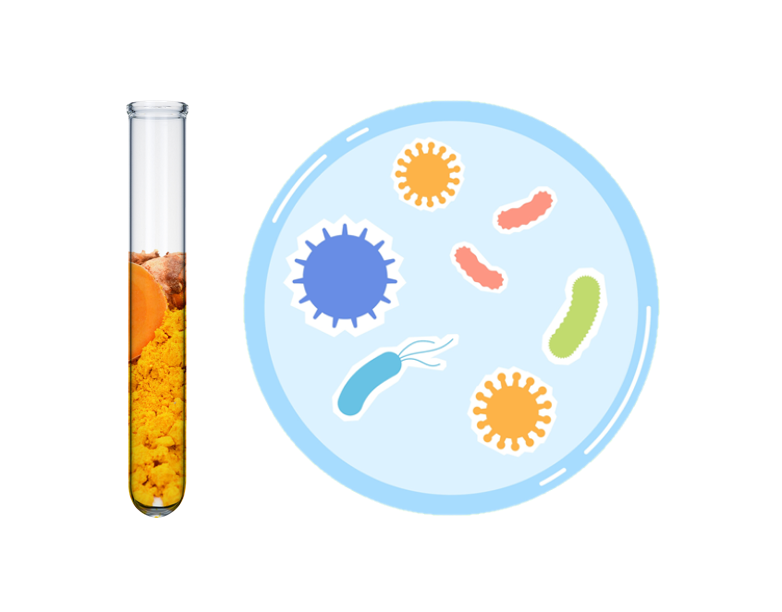The broad antimicrobial potential of curcumin

Dear colleagues,
It is well known that curcumin is a potent antioxidant that interacts with different types of radicals, such as hydroxyl radicals (OH), nitric oxide (NO), oxidised glutathione, and oxidants such as hydrogen peroxide. It has also been shown that curcumin can react with non-physiological radicals and peroxides, such as tert-butyl peroxide.
The chemical structure of curcumin, which includes an extensive conjugated system of double bonds, can easily accept single electrons from reactive oxygen species (ROS), forming a semiquinone radical structure, or lead to the formation of OH and H₂O₂.
Therefore, it appears that their effects are similar to vitamin E and superoxide dismutase at the same time.
Furthermore, although the mechanism is not well understood, recent studies associate curcumin with broad antiviral and antibacterial activity, for example, against various types of viruses, Staphylococcus, Streptococcus, and Pseudomonas.
This article provides a good summary of the latest studies on curcumin as an antimicrobial agent and its possible mechanisms of action.
Finally, we would just like to remind you that although curcumin is a powerful molecule, it is also very sensitive, so it must be protected and enhanced.
Disfruten del artículo.

